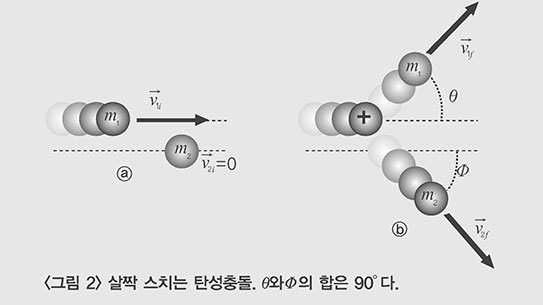가장 값진 화석은 이미 제대로 확립된 두 유기체군사이의 중간 형태를 대표하는 것들이다. 그러한 화석들은 진화의 과정을 보여주는 경향이 있다. 올해초 스페인의 '쿠엔카'에서 나온 석회암 노두(露頭)는 이러한 예로 여겨지는 또 하나의 수확이었다. 그것은 약 1억2천5백만년 정도 되었을 조상새의 하나이다.
많은 사람들에게 있어 진화라는 관념의 가장 큰 어려움은 어떻게 해서 하나의 복잡한 생물체가 진화가능할 수 있었느냐 하는 점이다. 예를 들면, 새는 깃털과, 부리, 날개를 움직여주는 특수한 근육, 가볍고 속이 빈 뼈, 그리고 여러 많은 부속 기간들을 지니고 있는데 이들 모두는 날 수있고 새이기 위해 갖추어야 할 필수적인 것들이다.
이러한 모든 것이 어떻게 움직이는 유기체로서의 새를 만들어 내는 일정한 방향으로 발전할 수있었을까? 우리는 새가 날지 못하는 초보적인 날개를 발달시키는 것부터 (진화를)시작했다고 기대할 수 있겠는가? 왜 그러한 '부분날개'가 발달했어야 했을까?그리고 만약 우리가 날지 못하는도마뱀에서 발달하여 날기에 필요한 모든 장비를 갖추고 있는 새를 상상해 보려고 한다면, 어떻게 그런 발달이 갑자기 이루어질 수 있겠는가?
그 해답은 발달이 서서히 진행된다는 점에서 찾을 수 있을 듯 싶지만, 맨먼저 개별적인 발달의 값어치는 그것이 완전히 발달되었을때와 반드시 일치하지는 않는다.
예를 들어 '시조새'를 생각해 보자. 그것은 새라고 이름붙일 수 있는 우리가 알기에 가장 최초의 생물 유기체인데, 약 1억5천만년 전에 출현했었다. 우리가 그것을 새라고 부르는 유일한 이유는 깃털을 가지고 있다는 점인데 깃털은 오늘날 새만이 가지고 있는 것이다.
깃털을 제쳐 놓는다면 시조새는 도마뱀이다. 그것은 턱에 이빨을 가진 도마뱀 머리를 하고 있고, 긴 꼬리와 그 외 여러가지를 가지고 있다. 깃털이 앞발과 꼬리를 따라 덮고 있지만 시조새가 현대적 의미로 날 수 있었는지는 매우 의심스럽다. 오늘날 나는 새들은 모두 흉골에 날 수 있는 강인한 근육을 붙여 놓은 용골돌기를 가지고 있지만, 시조새는 단지 조그마한 용골돌기가 있을 뿐이다.
그런 경우에 왜 시조새는 깃털을 발달시켰을까? 하나의 가능성은 깃털이 곤충을 잡는 덫이라는 생각이다. 시조새는 뒷발로 뛰어(오늘날 몇몇 도마뱀류가 그러하듯이) 곤충을 잡으려고 앞발을 뻗었을지 모른다. 깃털은 앞발의 유효사정거리를 넓혀 곤충을 곤경에 빠뜨리게 했을 것이다.
그러나 깃털은 또한 낙하산과 같은 역할로 했을 것이다. 시조새가 껑충 뛸 경우 그것은 깃털이 표면적을 좀 더 넓게 해주기 때문에 공중에 좀 더 오래 머무를 것이다. 만약 그가 나무에 오르거나 뛴다면 깃털은 새로 하여금 좀 더 먼 거리를 퍼덕거리며 날 수 있도록 해 줄 것이다. 이는 대단히 유용했을 것이다. 보다 높고 멀리 뛸수록 자기를 먹이로 삼으려는 약탈자를 피할수 있는기회가 커지기 때문이다.
더 멀리 뛸 수 있는 이러한 능력은 매우 유용해 이 능력을 개선시킨 우연한 기회는 시조새의 생존기회를 증가시키고 그 특성을 물려받는 후손을 보다 많이 번식시킬 수 있게 한것으로 보인다. 여러 특성들이 발달하면서 점차로 비행능력이 개선 되었을 것이다. 즉 좀더 힘센 근육이 부착될 수 있는 약간 더 나은 용골돌기가 만들어지며, 보다 가벼운 뼈와 보다 탄탄한 체구, 보다 짧은 꼬리 등등이 만들어졌을 것이다.
이러한 견해는 현재 스페인의 깃털달린 다른 생물유해의 발견에 의해 도움을 받고 있다. 그것은 아마 시조새보다는 2천5백년 정도 후의 생물이여서 그 생물이 보다 더 새에 가까운 깃털을 발달시킨는데 충분한 시간이 있었다.
이 새로운 화석유적은 시조새보다 조그마한 유기체이다. 시조새가 까마귀만한 크기인데 새로운 화석짐승의 크기는 개똥지바퀴만하다(더 작은 유기체 일수록 날기가 더욱 쉽다).
새로운 화석은 그 도마뱀 조상으로부터 완전히 탈피하지는 못했다. 뒷다리와 골반뼈는 상당히 원시적이며 현대의 조류보다는 도마뱀에 가깝다.
그러나 화석은 '오훼골'이라 불리우는 어깨뼈를 가지고 있다. 현대 조류에서 보여지는 그러한 뼈는 근육의 완력을 강한 날개짓으로 변환시키도록 도와준다. 이 오훼골의 단순한 출현은 화석이 날 수 있는 새의 종류라는 점을 보여주는 좋은 증거이다.
게다가 척추 맨 끝에 '새꼬리형태'로 불리우는 뼈가 있는데, 이는 현대의 새들이 그들의 꼬리기부에 가지고 있는 것이다. 이는 화석이 도마뱀꼬리대신 새의 꼬리를 새가 착륙할 때 비행시 브레이크와 같은 역할을 하는 깃털을 가지고 있으며, 화석의 동물이 날 수 있었다는 또 다른 증거이다.
불행히도 두개골은 발견되지 않아서 우리는 현대의 새를 어떻게 닮아 있었는지 만약에 있었다면 어떤 종류의 부리를 가지고 있었는지를 알 수 없다. 그러나 보다 자세한 탐구가 추가되는 의문들은 해결하게 해 줄 것은 당연하다. 그래도 현재 우리는 우리가 알고있는 진짜 날 수 있는 최초의 새를 발견해왔고 그것을 통해 새의 발달에 대해 더 많은 것을 알아왔던 것이다.
The Oldest flier
The most valuable fossils are those that represent intermediate forms between two well-estblished groups of organisms. Such fossils tend to show the course of evolution. A limestone outcrop in Cuenca, Spain, has yielded what seems to be another example early this year. It's of an ancient bird that may be 125 million years old.
To many people one of the chief difficulties with the evolutionary notion is the question of how a complex creature can possibly evolve. Birds, for instance, have feathers,beaks, special muscles to move the wings, light, hollow bones, and many other details, all of which are essential to flying and to being a bird.
How could all this develop in such a way as to produce a bird that is a working organism? Can we expect a bird to begin by developing a rudimentary wing that isn't capable of allowing it to fly? Why should such a "part-wing" be developed? And if we try to imagine a bird of a lizard that can't fly, how can all that development come about all at once?
The answer would appear to be that developments are indeed made piecemeal, but the value of each development to being with is not necessarily the same as when it is fully developed.
Consider, for instance, the "archaeopteryx," which is the first living organism we know of that we would label a bird, and which appeared about 150 million years ago. the only reason we call it a bird is that it had feathers, which, nowadays, only birds have.
Aside from the feather, though, it's a lizard. It has a lizard head with teeth in its jaw, a long tail, and so on. The feathers line the forelimbs and the tail but it is very doubtful that the archaeopteryx could fly in the modern sense. Flying birds today all have a keel on the breastbone to which all have flying muscles are attached, but archaeopteryx had only a small keel.
In that case, why should archeopteryx have developed feathers? One possibilty is that the feathers were a trapping device fro insects. The archeopteryx might run on its hind legs(as some lizards do today) and hold out its forelegs to catch insects. The feathers would widen the effective reach of the forelegs and entangle the insects.
The feathers, however, would also act like a parachute. If an archeopteryx leaped, it would stay in the air a little longer because the feathers would supply more surface. If it climbed a tree and jumped, the feathers would enable it to flutter a further distance. this would be very useful, for the higher and longer its leap, the greater its chance of escaping a predator trying to make a meal of it.
It might well turn out that this ability to jump longer and farther was so useful that any random change that improved the ability would increase the chances of the archeopteryx's survival and enable it to produce more young that would inherit the characteristic.
Little by little, flight would improve,as other characteristics developed, too-a slightly better keel to which stronger muscles could be attached, somewhat lighter bones,a more compact body, a shorter tail and so on.
This view is now helped by the discovery of bony remains of another feathered creature in Spain, It is more recent than the archeopteryx by perhaps 25 million years, so there was plenty of time for it to develop additional birdlike features.
This new fossilized remnant is of an organism smaller than archaeopteryx. Whereas archaeopteryx was the size of a crow, the new fossil was the size of a robin.(The smaller an organism, the easier it is for it is for it to fly.)
The new fossil has not entirely divorced itself from its lizard forebears. Its hind limbs and its pelvic bone are quite primitive and closer to the lizard than to modern birds.
However, the fossil has a shoulder bone called the 'coracoid." In modern birds such a bone helps convert the pull of a muscle into a powerful stroke of the wing. The mere presence of this coracoid is good evidence that the fossil is of a bird that is capable of flying.
What's more, at the end of its vertebral column there is a bone called a 'pygostyle," which modern birds have at the base of their tail. This means that the fossil had a bird-tail instead of a lizard-tail. A bird-tail has feathers that act as a brake on flight when the bird is landing-again evidence that the fossil could fly.
Unfortunately, no skull was found, so we can't tell how that might resemble modern birds and what kind of beak, if any, it might have had. However, further searches may well turn up similar fossils that can answer additional questions. for now, though, we have uncovered the first bird we know of that is capable of true flight, and, through it, learned more about the development of birds.
(c)1988, Los angeles Times synidicate
이 기사의 내용이 궁금하신가요?
기사 전문을 보시려면500(500원)이 필요합니다.
1988년 08월 과학동아 정보
🎓️ 진로 추천
- 생명과학·생명공학
- 지구과학
- 역사·고고학

















